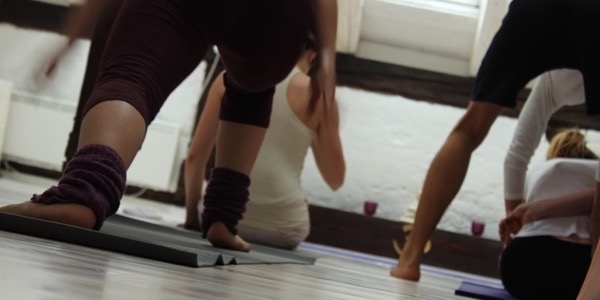Every great skill starts with the first step, followed by many additional steps. Great results are not due to superhuman efforts but rather small and simple steps, consistently and devotionally made in one direction. That is true for everything in life. But what it takes is responsibility and enthusiasm for life and one’s own goals. And developing a strong and devoted Yoga asana self-practice can help immensely with that.
Led classes might be helpful to get started with Ashtanga Yoga, to learn some asanas and the correct steps in and out of them (vinyasas). However, to make a true progress in a physical and – even more – in a mental and spiritual way, developing a self-practice in a Mysore setting is inevitable.
“The Practice should be done for a long time, without interruption, and with sincere devotion.” – Patanjali’s Yoga Sutras (I.14)
In Mysore classes students are practicing the Ashtanga sequence (primary, intermediate or advanced) as taught by Pattabhi Jois (1915-2009) in his home in Mysore, India (hence the name). Thousands of dedicated Ashtangis around the globe find this kind of practice to be greatly effective, leading to a healthier body and a blissful mind.
While practicing this vigorous flowing sequence at your own rhythm of breath, a meditation-in-movement occures that recharges you on a physical and energetic level, and its effects are felt throughout the whole day (more on the effects of my practice on the rest of my life here).
The role of the teacher, who’s presence is extremely important in the Mysore setting, is to individually follow the students by giving adjustments, sharing tips and tricks, and correcting misalignments. In that way the student can focus on his or her own practice while the teacher offers help when needed, gives necessary corrections, and supports the advancing and development of practice, when the student is ready.
For novices to Yoga, Mysore classes are – next to private classes – the only way to get such individual assistence and care from the teacher right from the beginning. The close collaboration of student and teacher builds the base for an organic growth of a responsible self practice of the student, and enables the teacher to closely follow, understand and recognize the student’s needs. Furthermore, the development of an individual practice is the base for inner development. Instead of being dependent on a teacher, the student takes responsibility for himself. The practice then becomes the mirror of our daily habbits and attitudes, bringing clarity of mind. The eventual frustrations felt during practice become a gateway to growth. The inner peace, lightness and bliss from practice will elevate and be felt even more intense and joyous. And both – experiencing and accepting frustration and joy – will be taken into our daily lifes and make us more content and relaxed.
For getting started with Mysore classes knowing the sequence is helpful, yet not necessary. If you are new to yoga or Ashtanga, the teacher will show you the asanas and explain what and how to do. The student learns by repeating the asanas and the sequence. Once the sequence and asana names are known by heart, new poses are added. In this way, the student practices according to his/her capabilities, being challenged but not overstrained. However, learning always works best with consistency, dedication and repetition. So if you want to start learning yoga from scratch in a Mysore class, committing to at least 3 or 4 times per week at the beginning is crucial to make the body memorize the sequence. In this way the body very quickly knows what to do and the mind can become still and the practitioner can be completely present and feel the bliss!
For those truly interested in growing through yoga, practicing regularly in a Mysore setting is one of the greatest tools that yoga offers today (benefits of a daily Mysore practice)!
This arcticle was originally published on my blog www.greenashtangi.wordpress.com
